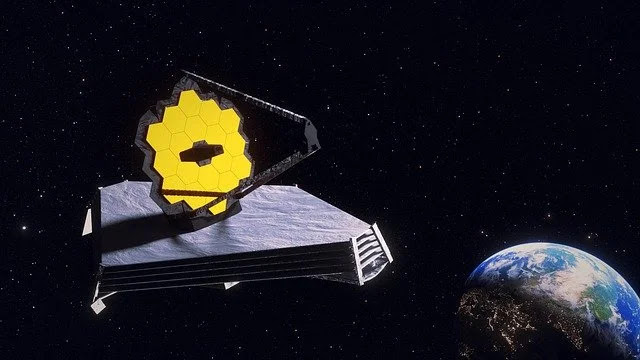James Webb's discovery of carbon dioxide in exoplanet atmospheres
The James Webb Space Telescope, expanding the horizons of astronomy, has now discovered carbon dioxide in the atmosphere of an exoplanet 700 light-years from Earth.
Carbon dioxide, a representative greenhouse gas, is a substance that is released into the atmosphere in increasing amounts by human activities as part of the global carbon cycle. Scientists see the presence of carbon dioxide in the planet's atmosphere as an important step in finding chemical markers for extraterrestrial life.
Astronomers have previously hinted at the presence of carbon dioxide in the atmosphere of exoplanets through observation data from the Spitzer Space Telescope, an infrared telescope such as James Webb, but have not been able to confirm it with certainty. James Webb solved this problem at once with excellent infrared detection.
The National Aeronautics and Space Administration (NASA) announced on the 25th that James Webb had detected carbon dioxide in the atmosphere of the gas giant WASP-39b in the constellation Virgo. Discovered in 2011, this planet is receiving a lot of attention because it is estimated that it contains a significant amount of water. The analysis results were published in the pre-published thesis collection 'Archive' on the 24th, and will soon be published in the international academic journal 'Nature'.
Analysis of the wavelength of light as a planet passes in front of a star
WASP-39b is 1.3 times the size of Jupiter, but has a mass about a quarter that of Jupiter, similar to that of Saturn. In other words, it is a celestial body that has inflated like a balloon. This is due to the high temperature of 900 degrees. About 800 million kilometers from the Sun, Jupiter is very cold, but WASP-39b is very close to the star. It orbits a solar-class star about once every four days, at only about one eighth of the distance from the Sun to Mercury.
As a planet passes through a star, some of the starlight is blocked by the planet and some is transmitted to us by striking particles in the planet's atmosphere. Because the color combination of the light absorbed by each element is different, by analyzing the wavelength of the light passing through the atmosphere, it is possible to find out the elements of the planet's atmosphere. In the meantime, NASA has found water vapor, sodium and potassium in the planet's atmosphere.
James Webb's near-infrared spectrometer reads three types of wavelengths as a planet passes in front of a star, with sensing power that can detect hundreds of colors at once. The wavelengths sent by the spectrometer ranged from 3.0 to 5.5 micrometers. As a result of the analysis, carbon dioxide characteristics were clearly shown at an average wavelength of 4.3 micrometers (4.1 to 4.6). This is the first clear evidence of carbon dioxide in observational history, NASA said.
"Wavelengths in this range are important for measuring the presence of water, methane, and carbon dioxide," NASA said.
Also Read
Pain in Shoulder Frozen shoulder
It is also essential for tracking planetary origins and evolutionary processes.
The discovery is significant in that it shows that James Webb can detect carbon dioxide in the atmospheres of smaller rocky planets in the future, NASA said.
Carbon dioxide, which is closely related to life activities on Earth, is a substance that serves as an indicator of metalicity and is important for tracking the origin and evolution of planets. Heavy element content refers to the proportion of elements heavier than helium. Therefore, the content of heavy elements in a celestial body is one of the measures of judging the age of the celestial body.
This observation was conducted for 8 hours on July 10. The time the planet passed through the star was 2.8 hours.

0 Comments